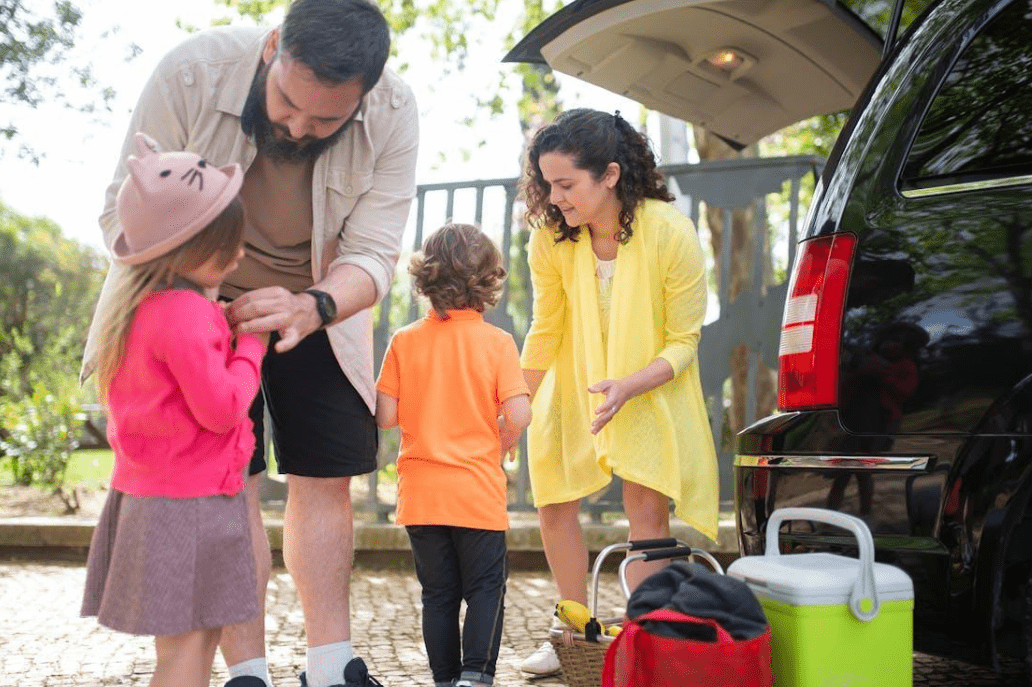Crashes are a leading cause of death for kids, with 1,184 minors aged <14 killed in motor vehicle accidents in 2021, and a further 1,129 killed in 2022. When children are in the vehicle, the fear and urgency escalate dramatically. Knowing how to respond calmly and effectively in the immediate aftermath is crucial for ensuring everyone’s safety and well-being.

While every car accident is unique, following these steps can help you navigate the situation with greater clarity.
1. Prioritize Immediate Safety and Assess Injuries
Your first instinct after a car accident must be safety. Before anything else, check yourself and your children for injuries. Even if everyone seems okay, shock can mask pain. Call 911 immediately to report the accident and request medical assistance, especially if there are any apparent injuries or the impact was significant. Explain that children are involved.
If it’s safe to do so and your vehicle is drivable, move it to the side of the road, away from traffic, to prevent further collisions. If you cannot move the car, turn on your hazard lights. Try to remain calm, as your demeanor will significantly influence your children’s reactions. Reassure them that help is on the way. Keep them securely buckled in their seats unless there’s an immediate danger like fire, or if emergency personnel instruct otherwise.
And once everyone is safe, speaking with an experienced car accident attorney can be essential, especially when a child is involved and the emotional and financial stakes are high.
2. Seek Medical Evaluation – Even for Minor Crashes
Children, especially younger ones, may not be able to articulate pain or discomfort effectively. Injuries like whiplash or internal bruising might not be immediately obvious. It is vital that paramedics evaluate everyone at the scene. Even if emergency services deem a hospital visit unnecessary at the scene, schedule a follow-up appointment with your pediatrician or family doctor as soon as possible. Explain the circumstances of the accident. Delayed symptoms are common, and a medical professional can perform a thorough check-up.
3. Document Everything Thoroughly
Once immediate safety and medical needs are addressed, gather essential information. Exchange details with the other driver(s) involved. If there are witnesses, politely ask for their names and contact information. Their accounts can be invaluable later when you work with a car accident lawyer.
4. Report the Accident Officially
Ensure a police report is filed. Officers responding to the scene will typically handle this but confirm it. Obtain the report number and the officers’ names and badge numbers. Notify your insurance company about the accident as soon as reasonably possible. Provide them with accurate details and the information you gathered at the scene. Be honest and stick to the facts.
5. Address Car Seat Safety and Emotional Well-being
Properly fitted car seats reduce the risk of injury by 71% for babies and 54% for toddlers. Car seats involved in moderate to severe crashes should generally be replaced, even if they look undamaged. The stress of the impact can compromise their structural integrity. Consult your car seat manufacturer’s guidelines and recommendations from organizations like the National Highway Traffic Safety Administration (NHTSA). Your insurance policy might cover the cost of a replacement.
Pay close attention to your children’s emotional state in the days and weeks following the accident. 38.3% of children suffer PTSD after an accident.
Navigating the aftermath of a car crash with children requires a focus on safety, thoroughness in documentation, and sensitivity to their physical and emotional needs. While frightening, being prepared can make a significant difference in managing the situation effectively.


